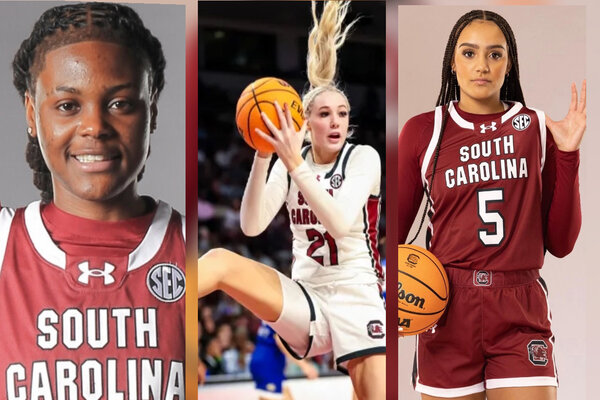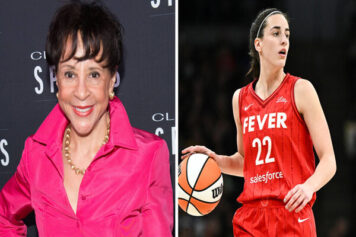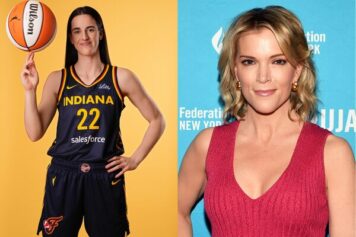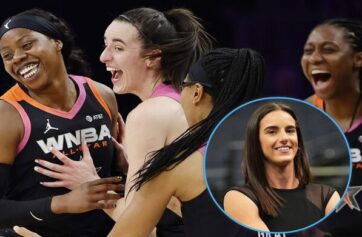Thanks to the heroic exploits of Caitlin Clark, the tenacious excellence of Angel Reese and LSU, Dawn Staley‘s mastermind and Kamilla Cardoso‘s ferocity and fashion, women’s college basketball reached new heights in ratings, outdrawing the men’s tournament for the first time ever.
South Carolina’s win over Iowa was seen by a ridiculous 18.7 million viewers and peaked at 24.7 million. The social media discussion involved millions more commenting on every shot, every referee’s call and bounce of the ball. It was that intense.
That’s an 89 percent increase from the 2023 title game and a 285 percent increase from 2022. ESPN says it is the most-watched basketball game (men’s or women’s, college or pro) since 2019.
Surge In Women’s Basketball Viewership Doesn’t Equal Closing Revenue Gap On Men
While this surge in viewership highlights the growing popularity and recognition of women’s college basketball, it doesn’t necessarily equate to a change in the revenue, resources or perceived entertainment value gap between men and women’s basketball.
Digging deeper, there’s also a notable disparity in the bags that the women’s teams competing in the Final Four get en route to that level of NCAA Tournament play in comparison to the men’s teams, to accomplish the same goals.
That’s why NIL deals in the millions that Clark and Reese and LSU guard Flau’Jae Johnson were able to secure go a long way toward narrowing the revenue gap that exists.
Men’s Basketball Still Rules Revenue Wars
The men’s teams competing in the Final Four (NC State, UConn, Purdue and Alabama) made significantly more for its tournament success than their female counterparts, according to a recent report by Business Insider. Mmm
As far as revenue for all Final Four teams in both women’s and men’s D-1 college basketball UConn raked in $24.1 million, Alabama hauled in $19 million, Purdue was a close third ($18.9 million) and North Carolina State was fourth ($15.4 million) but made $5.9 million more than the highest-grossing Women’s Final Four team, South Carolina ($9.5 million).
UConn women are second with a revenue of $8.5 million. University of Iowa ($1.7 million) and North Carolina State ($1.1 million) each generate a fraction of the highest-grossing men’s team.
These numbers are sure to take a bump up because of the success of this year’s women’s tournament, especially for the powerhouse teams, whose stars have become household names in the basketball world over the past two seasons.
But the revenue numbers shed some light on the challenges that women’s college basketball has to overcome even as its viewership skyrockets.
Iowa’s Final Four win over LSU averaged 12.3 million viewers on ESPN, according to Nielsen. In comparison, only one of the first 64 men’s games in the tournament had more viewers. North Carolina State’s win over Duke, caught 15.1 million eyeballs, according to ESPN.
With the reported 150 percent boost in Iowa Hawkeyes women’s home attendance, and increase in merchandise, tickets and concession sales boosted by an increase in attendance thanks to Caitlin Clark. Sustainability will always be a question. Especially in a situation where Clark WAS Iowa basketball and now, she’s leaving.
Men’s Basketball Earned 99 Percent More In TV Rights Than Women
The key advantage that men’s sports continue to have over women’s sports, at any level from high school to professional are the TV contracts. The women’s tournament generated more viewers than the men’s tournament, but only earned $6.5M for TV rights. Meanwhile, the men’s tournament earned 99 percent more money, a whopping $873M for TV rights.
Let’s also look at ESPN’s TV contracts. The NCAA’s TV contract with ESPN to broadcast the championship events in 40 different college sports doesn’t expire until 2032 and is worth $115 million a year but must be shared throughout all of those sports. That doesn’t benefit women’s basketball which is by far the leading revenue-generating among all D-1 college sports played by women.

In comparison, the deal for the men’s college hoops is worth more than $1.1 billion annually. So there’s still a tremendous disparity in how corporations perceive the value of women’s college sports in general.
Despite the gains that are being made by women on the court and with NIL deals and also expanding, elevating and popularizing their game, there’s still tons of work to do to get women’s sports to a place where it is perceived as a revenue-generating property by the businesses and networks who determine where they should spend their budgeted advertising dollars.
In the meantime, the women’s game will continue to reap the long-term benefits of Caitlin Clark’s two-year reign as one of the most polarizing athletes in sports. Her anticipated arrival in the NBA, along with Reese and Kamilla Cardoso, the NCAA Women’s Basketball Championships Most Outstanding Player, sets the WNBA up for some great storylines and a new host of players who already enter with a social media following and an immediate popularity not afforded past greats.
It’s already rubbing some of the old guard the wrong way, but this new wave is needed to also increase the visibility and legacy of someone like Taurasi, the WNBA’s all-time leading scorer.
WNBA and Prime Re-Up For 21 More Games
On Friday, Prime Video and the Women’s National Basketball Association announced a multi-year rights extension in which Prime Video will continue to be the exclusive national streaming partner of 21 WNBA games each season, including the Championship Game of the WNBA Commissioner’s Cup presented by Coinbase.
The 2023 WNBA Commissioner’s Cup attracted the largest audience for a WNBA game ever for Prime Video, nearly doubling the viewership of the 2022 contest.
“We are incredibly pleased that Prime Video is making a meaningful and continued commitment to the WNBA and will once again provide a great platform to showcase the world-class athletes of our league across the regular season and particularly with its streaming of the Championship Game of the new, streamlined Commissioner’s Cup presented by Coinbase,” said WNBA Chief Growth Officer Colie Edison.
Women’s basketball is in its own lane and pointing out pay disparity and systemic obstacles to financial success is one’s right. However, if they continue to focus on the product, portion and quality of the players, the money will come. The recognition will follow. It might not happen overnight, but women’s basketball is in an incredible space as we approach the 2024 Olympics this summer in Paris from July 26-Aug. 11.



